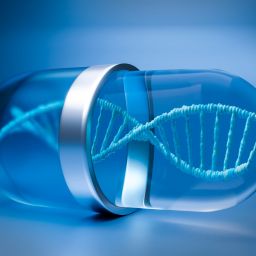
Umbilical cord stem cell injections are emerging as a revolutionary treatment option in modern medicine. With the potential to treat a variety of diseases and conditions, stem cell therapy from umbilical cords is gaining popularity due to its effectiveness and non-invasive nature. This article delves into the benefits, applications, and advancements in umbilical stem cell therapy.
What Are Umbilical Cord Stem Cell Injections?
Umbilical cord stem cell injections involve the use of stem cells derived from the umbilical cord tissue of newborns. These stem cells are unique because they are capable of transforming into various types of cells within the body. When injected into the body, they help regenerate damaged tissues, reduce inflammation, and accelerate healing. This therapy is particularly valuable for patients with chronic conditions, autoimmune diseases, and injuries that would typically take a long time to heal.
Umbilical cord stem cell injections are obtained from the umbilical cord after a safe and regulated process. The cells are then preserved and injected into patients to promote the regeneration of damaged tissues. The main advantage of using umbilical cord-derived stem cells is that they are young and untainted by the aging process, which allows them to be more effective in repairing tissue.
Stem Cell Therapy From Umbilical Cord: A Breakthrough in Regenerative Medicine
Stem cell therapy from umbilical cord offers immense potential in the field of regenerative medicine. Unlike traditional treatments that may involve surgery or long-term medication, stem cell therapy provides a non-invasive alternative that supports the body’s natural healing processes. In fact, research shows that umbilical stem cell therapy can be an effective treatment for various conditions like osteoarthritis, cardiovascular diseases, diabetes, neurological disorders, and even spinal cord injuries.
This therapy works by utilizing the regenerative capabilities of stem cells to repair and replace damaged tissues in the body. Because umbilical cord stem cells have the unique ability to differentiate into many different cell types, they can target and heal specific areas of the body, providing more efficient and targeted treatment.
For instance, patients with joint pain or cartilage damage may benefit from the injections, as the stem cells can promote the regeneration of healthy cartilage. Likewise, people suffering from neurological conditions, such as Parkinson’s disease or multiple sclerosis, could potentially see improvements in their symptoms as the stem cells work to regenerate damaged nerve tissues.
Benefits of Umbilical Stem Cell Therapy
The use of umbilical stem cell therapy has a wide range of potential benefits. Some of the most notable advantages include:
- Regeneration of Damaged Tissues: Stem cells are known for their ability to regenerate damaged tissues. Whether it’s damaged cartilage, nerve tissues, or even organs, stem cell therapy can help accelerate healing and restoration.
- Non-Invasive: Unlike surgeries or invasive treatments, stem cell therapy from umbilical cords is relatively non-invasive. Injections are typically administered with minimal discomfort, and the recovery time is much shorter compared to other forms of treatment.
- Versatility: Umbilical stem cell therapy can be used to treat a variety of conditions, including musculoskeletal injuries, autoimmune diseases, and neurological disorders. This makes it a versatile option for patients seeking effective, long-lasting solutions.
- Fewer Rejections: Since umbilical stem cells come from a younger source, they are less likely to be rejected by the patient’s immune system. This makes the treatment safer and reduces the need for immune-suppressing drugs.
- Improved Quality of Life: Many patients have reported significant improvements in their quality of life following treatment with umbilical stem cells. The therapy can reduce pain, improve mobility, and enhance overall functionality, allowing individuals to lead a more active and fulfilling lifestyle.
How Umbilical Stem Cell Injections Work
Umbilical stem cell injections work by utilizing the regenerative capabilities of stem cells. Once the stem cells are injected into the affected area, they begin to differentiate into the necessary cell types, stimulating the body’s natural repair mechanisms. The cells secrete growth factors that promote tissue regeneration, reduce inflammation, and enhance healing.
For example, in cases of joint damage, stem cells can differentiate into cartilage cells, helping to rebuild the joint surface. Similarly, in cases of nerve damage, stem cells can differentiate into neurons, promoting the regeneration of damaged nerve fibers.
The therapy can be performed as a standalone treatment or in conjunction with other therapies, depending on the patient’s needs. It is often considered when traditional treatments have not provided sufficient relief.
Umbilical Stem Cell Therapy for Autoimmune Diseases
One of the most promising applications of umbilical stem cell therapy is its potential to treat autoimmune diseases. These conditions occur when the body’s immune system mistakenly attacks healthy cells, leading to chronic inflammation and tissue damage. Conditions like rheumatoid arthritis, lupus, and multiple sclerosis can be difficult to treat with conventional medications, which often have long-term side effects.
Stem cell therapy from umbilical cords offers a new approach by helping to regulate the immune system and promote tissue repair. Research indicates that stem cells may help modulate immune responses, reducing inflammation and preventing the immune system from attacking the body’s own cells. As a result, patients with autoimmune diseases could experience reduced symptoms, better disease management, and improved quality of life.
Regenerative Potential: Looking Ahead
The future of umbilical stem cell therapy is full of promise. With ongoing research and clinical trials, scientists are exploring new applications and refining existing therapies. It is possible that in the coming years, umbilical stem cell injections could become a mainstream treatment for a broader range of medical conditions, helping millions of people lead healthier, pain-free lives.
As technology advances, the collection, preservation, and application of umbilical stem cells will become more efficient, accessible, and cost-effective. This could significantly reduce the barriers to treatment, making regenerative therapies more widely available to the public.
Conclusion
Umbilical cord stem cell injections offer a promising new frontier in the treatment of a variety of conditions, from musculoskeletal disorders to autoimmune diseases and neurological conditions. With their regenerative properties and minimal side effects, stem cell therapy from umbilical cords presents a safe and effective alternative to traditional treatments. As research continues to advance, the potential for these therapies to revolutionize medicine remains high.



